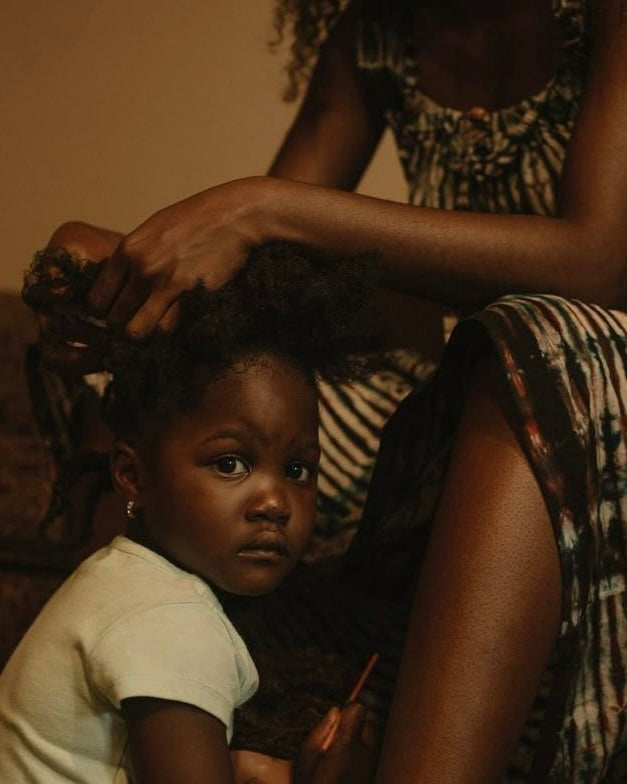There’s something sacred about the ritual of wrapping your hair at night. It’s not just about protection or practicality—it’s about legacy, love, and the quiet moments that shape who we are. For many of us, this ritual is one of the first ways we learn to care for ourselves, to honour the texture and history of our hair, and to connect with the generations that came before us. It’s a practice steeped in intimacy, creativity, and pride.
I remember sitting on the floor between my mom’s knees, her on the sofa, my head tilted back, her hands moving with the precision of someone who had done this a thousand times before. She’d part my hair with the tail of a comb, smooth it down with a spritz of water and a dollop of Vaseline, and then carefully tie it down with a scarf. The fabric felt cool against my scalp, and the scent of coconut oil lingered in the air.
It was a nightly ritual, one that felt like a lullaby—a gentle reminder that I was being cared for, that my hair was something to be cherished. I didn’t fully understand it then, but now I see it as a lesson in self-love and preservation. In those quiet moments, she was showing me that our hair was beautiful, worthy of time and attention.
When I moved from California to Alabama in middle school, I experienced a culture shock that was exhilarating. The rhythms of life were different, the accents thicker, and the heat more oppressive. When I started at my new school, something that struck me was the way boys wore their du-rags like crowns. They’d stroll down the hallways with their heads wrapped tight, the fabric smooth and pristine, their confidence radiating like the sun.
I remember watching them, fascinated by the way they tied their du-rags with such precision, the way they’d adjust them in the middle of class, hairbrush and all, making sure every wave was perfect. And then there was Tupac. The way kids tied their bandanas after school, the fabric knotted at the top, the ends sticking out like antennae—it was more than just a style. They walked around like they had something to say, like they were carrying a piece of his spirit. Seeing them channel that energy inspired me.
TLC, Aaliyah, Da Brat, and Alicia Keys weren’t just artists—they were a movement. They taught us how to own our flaws and our fire, how to adorn our crown, and how to move through the world with confidence. What drew me to them most was their duality—how they balanced edge and grit with a soft, magnetic femininity. I felt a special connection to my twin in spirit, Left Eye. We share a birthday. Her boldness, her wit, her authenticity—it was like she was speaking directly to me, her energy rooted in something deeper.
Tying a scarf on my head and stepping into their energy, I'd blast music from my 3 disc CD changer, singing and dancing like no one was watching, I felt unstoppable. Through their artistry, they gave us a blueprint for how to move through the world boldly, unapologetically, and fiercely ourselves.
Even now, as I cover my locs at night, I feel it. The connection. The lineage. The unspoken understanding that it’s more than just fabric and routine—it’s a tradition of care. A love language. Maybe you remember the first time you learned how to tie yours. Maybe you still hold onto a favourite scarf, one that feels like a piece of home. Maybe, like me, you think about how something so small can hold so much history, so much culture, so much of us.
So this Black History Month, let’s celebrate not just the milestones, but the moments. The rituals. The things we carry with us, not just in our minds, but in our hands.

